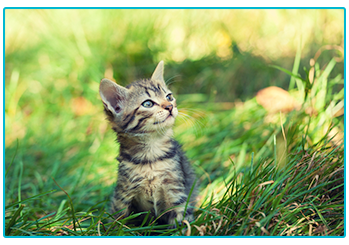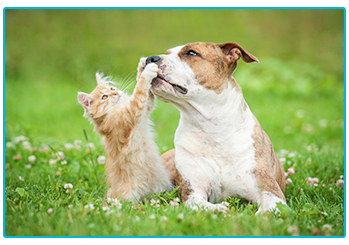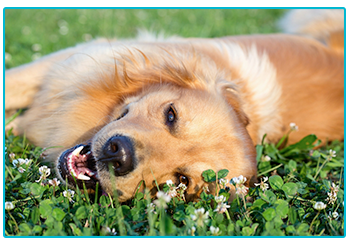Our pets bring so much joy to our lives, so it can be tough when they’re not feeling quite paw-fect! It may be surprising, but hay-fever doesn’t just affect humans, your furry friend could be just as susceptible to springtime pet allergies! At The Insurance Emporium, we want you to have the most magical adventures with your pet, whatever the season. That’s why we’ve come up with this helpful information about pet allergies to look out for this spring!

The signs
Many signs your pet is suffering from an allergy are similar to those in humans! These might include itchy, runny eyes, coughing, sneezing (watch out for reverse sneezing in dogs!), rashes and skin irritations. You might also want to look out for ear infections and excessive licking and chewing, especially of paws. If symptoms are present all year round, they could point to another allergy, such as to dust, certain foods or chemicals.
Potential causes

Springtime hay-fever symptoms occur when trees release their pollen into the air. However, there are certain varieties of tree that are more likely to cause an allergic reaction than others. Birch trees are the worst, releasing their pollen between March and May. They’re not the only culprits, though, with hazel, elm, alder and yew all being capable of causing a reaction in sensitive animals.
Managing allergies
There are several ways you might be able to help your pets feel more comfortable if they’re suffering from hay-fever. Limiting the time they spend outside could be an option, although this may be easier said than done! Regularly vacuuming and dusting might also help reduce the amount of pollen finding its way indoors. Bathing your pet more regularly, especially their paws, could help. Also, if your dog or cat has a skin irritation, aloe vera could help soothe sensitive skins and cracked paws!

Getting help
It might be a good idea to consult your vet for help diagnosing springtime allergies in your animal. The biggest step in treating any allergy is identifying the cause. After doing this, they might also be able to discuss methods for either clearing up the allergy, or reducing its impact. Depending on the type of allergy, it could be dealt with using medical treatment, whereas others might need a more precautionary approach. Whatever you do, the most important thing is to get your pampered pooch or beloved moggie back to feeling tip top!
Hopefully you’ll find this advice useful if your pet develops symptoms of hay-fever this spring! It’s also worth bearing in mind that animals can suffer from hay-fever during summer and early autumn, when pollen from grasses and weeds circulate. Whatever the season, you want to be able to have as many adventures as possible with your pet, without the worry should anything go wrong. For that reason, it might be worth considering pet insurance. The Insurance Emporium offers flexible Dog and Cat Insurance with up to 30% discount* available. Head to The Insurance Emporium to find out more!
* The 30% discount is available on lunar and calendar monthly policies and policies where the premium is paid annually. It is made up of 20% Introductory Discount plus 10% Multi-pet Discount (if appropriate). The Introductory Discount is available for the first 12 premium payments on lunar and calendar monthly policies or on one premium payment on annual policies.
All content provided on this blog is for informational purposes only. We make no representations as to the accuracy or completeness of any information on this site or found by following any link on this site. We will not be liable for any errors or omissions in this information nor for the availability of this information. We will not be liable for any loss, injury or damage arising from the display or use of this information. This policy is subject to change at any time.


